Featured Articles
For Pacquiao, Restoring the Ferocity and Passion Will Be Tall Order


Getting his first stoppage win since 2009 will be no small feat for Pacquiao against such a defensive wizard as Marquez. (Chris Farina–Top Rank)
What Manny Pacquiao will we see on Dec. 8? The Manny of old? Or the older Manny, the guy we've seen the last couple of fights, still an ace, but not the ace of a few fights back, still fast, and sharp, but not as fast and as sharp as we'd become accustomed to?
Juan Manuel Marquez is hoping that the Pacquiao who drew boos several times during his dreary dance with Shane Mosley, the Pacquiao who wasn't as much the master of the dart and destroy strategy in his third fight with JMM, the Pacquiao whose volume and killer instinct weren't in top form against Tim Bradley in June is in the ring facing off with him at the MGM Grand in Las Vegas.
Trainer Freddie Roach and Team Pacquiao and the Pacmaniacal fans the world over and the Congressman himself hope that the guy who masterfully got angles on his opponents and then tattooed them is back, that the almost 34 year old Filipino can arrest the slide into superb rather than spectacular mode.
Conventional wisdom, if we allow it to seep through, if we don't allow our fondness for the once whirling dervish to overwhelm our powers of reasoning, if we don't over-listen to the part of our brains that most wants what is best for boxing here and now–a re-born Pacquiao– tells us it is a tall order. Maybe an impossible one, in fact…
Back in September, we heard trainer Freddie Roach say that he put out an APB for the “old” Pacquiao, the destruct and destroy version, who retired Oscar De La Hoya, sent Ricky Hatton to the hammock, broke down Miguel Cotto and dissected Antonio Margarito. “Manny has shown Marquez too much respect in the past two fights,” Dedham Freddie said. “Manny told me he knows he needs a knockout. He's never said that before. My job is to reignite the killer instinct Manny has lacked in (his) fights with Marquez.” Pacquiao echoed that mindset. “I need to be more aggressive in this fight,” Pacquiao said. “I want a win that isn't close like the last three. It has to be a decisive victory. I want to erase the last fight and any doubts in No. 4. I will focus this time. I have to study and train using new techniques and strategy, and apply techniques never used in my previous fights. I will fight and train like the old Manny, the 25-year-old Manny.”
And I have no doubt he has the best of intentions, that he believes that he can rekindle the 2009 fire. But what the brain and the heart believe, and what the body can handle, can be two different deals.
Trainer Roach spoke about Manny's born-again status before the Bradley fight. He said that the focus on Godstuff wouldn't keep Manny from being a killer in the ring. “I worried at first,” Roach told me, when I asked if the all-in religious Manny wouldn't be a softy. “I wanted to see his work ethic. He still beats the s–t out of me. He says “sorry,” and hits me again. I was a little worried about that, not wanting to hurt people, but it's the oldest sport in the world. Maybe God was into boxing too. I'm not worried at all about him being soft, he's the same fighter, just no more distractions and vices… except for Bible, and that's a pretty good vice in my book.”
Roach told me a little bit ago that Manny has lost some killer instinct, a large part because of his heavier immersion into Christianity, and a bit because of age. It will be interesting to see if on Dec. 8, we see post 2009 Manny, or indeed Roach can scrub some of the lovey-dovey out of Manny, and inject some devilishness into him, some ruthlessness. I'm inclined to say that what some see as a lessening of ferociousness in recent fights is in fact less of a mental issue, to be blamed on the faith-flurry, and is more of an aging issue. Pacquiao used to be able to put combos together in rapid fire, get angles, go rat-a-tat, and then slide out. Now, the reflexes and stamina have diminished some; it's not that he doesn't want to take the other guys' block off, it's that he can't. Or can he? I asked Teddy Atlas, the ESPN analyst and sometimes trainer, well known for his ability to motivate fighters, to lead them to a particular mental state that best serves them on fightnight, if Pacquiao's “ferociousness quotient” can be tweaked for this fourth Marquez fight. Can Manny muster more meanness, Teddy?
“No,” he said, succinctly. “He got to where he is in life, and he's in a comfortable place. The urgency to take the other guys' head off, to fight with that mindset, those things don't seem to be there anymore. He's made millions, he's an icon. Being successful can comfort you, and it's good in most places, but not the ring. You become too content.”
So Atlas believes that once you have climbed the mountain, once, twice, the desire to get to the peak again is reduced, and you don't grab for those footholds with the same tenacity. “The little things, the extra things, they're no longer as important,” Atlas said. “That urgency, that mandate, is not there. When you're younger, you're not on the map.”
So, can a trainer re-instill the fury? “Roach has had a bad patch with Pacquiao,” Atlas said. “He's fighting a guy who counterpunches. He has to plan for that. Get Manny emotionally and spiritually ready. His part is in reminding him of his legacy. That's what I'd do. No matter how good his conditioning is, how much effort he gives in the ring, unless he fights with passion, drive and desire….”
A problem could be that perhaps Pacquiao is already secure in his legacy. I think his place in the game is pretty well set. All those titles, all those weight classes. If he can't turn back the clock, physically, or mentally, and he loses to Marquez, and, perish the thought but it must be considered, hangs up the gloves on or around his 34th birthday, on Dec. 17, Manny's Hall of Fame plaque will be ready for him in 2017. He is on the map, and has to know his foothold for the ages is deep.
Readers, I confess, I'd be surprised if Manny was able to much more against Marquez on Dec. 8 than he did in their previous two bouts. Age and some inevitable softening that comes from not having as burning a desire to climb the mountain conspire against him. What say you…Can Pacquiao get back to being a badass, or will Marquez finally snag that victory that he believes has been unfairly denied him? Weigh in, in our Forum.
Featured Articles
“Breadman” Edwards: An Unlikely Boxing Coach with a Panoramic View of the Sport
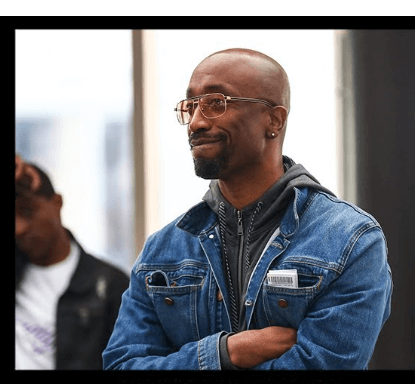
Stephen “Breadman” Edwards’ first fighter won a world title. That may be some sort of record.
It’s true. Edwards had never trained a fighter, amateur or pro, before taking on professional novice Julian “J Rock” Williams. On May 11, 2019, Williams wrested the IBF 154-pound world title from Jarrett Hurd. The bout, a lusty skirmish, was in Fairfax, Virginia, near Hurd’s hometown in Maryland, and the previously undefeated Hurd had the crowd in his corner.
In boxing, Stephen Edwards wears two hats. He has a growing reputation as a boxing coach, a hat he will wear on Saturday, May 31, at Mandalay Bay in Las Vegas when the two fighters that he currently trains, super middleweight Caleb Plant and middleweight Kyrone Davis, display their wares on a show that will air on Amazon Prime Video. Plant, who needs no introduction, figures to have little trouble with his foe in a match conceived as an appetizer to a showdown with Jermall Charlo. Davis, coming off his career-best win, an upset of previously undefeated Elijah Garcia, is in tough against fast-rising Cuban prospect Yoenli Hernandez, a former world amateur champion.
Edwards’ other hat is that of a journalist. His byline appears at “Boxing Scene” in a column where he answers questions from readers.
It’s an eclectic bag of questions that Breadman addresses, ranging from his thoughts on an upcoming fight to his thoughts on one of the legendary prizefighters of olden days. Boxing fans, more so than fans of any other sport, enjoy hashing over fantasy fights between great fighters of different eras. Breadman is very good at this, which isn’t to suggest that his opinions are gospel, merely that he always has something provocative to add to the discourse. Like all good historians, he recognizes that the best history is revisionist history.
“Fighters are constantly mislabled,” he says. “Everyone talks about Joe Louis’s right hand. But if you study him you see that his left hook is every bit as good as his right hand and it’s more sneaky in terms of shock value when it lands.”
Stephen “Breadman” Edwards was born and raised in Philadelphia. His father died when he was three. His maternal grandfather, a Korean War veteran, filled the void. The man was a big boxing fan and the two would watch the fights together on the family television.
Edwards’ nickname dates to his early teen years when he was one of the best basketball players in his neighborhood. The derivation is the 1975 movie “Cornbread, Earl and Me,” starring Laurence Fishburne in his big screen debut. Future NBA All-Star Jamaal Wilkes, fresh out of UCLA, plays Cornbread, a standout high school basketball player who is mistakenly murdered by the police.
Coming out of high school, Breadman had to choose between an academic scholarship at Temple or an athletic scholarship at nearby Lincoln University. He chose the former, intending to major in criminal justice, but didn’t stay in college long. What followed were a succession of jobs including a stint as a city bus driver. To stay fit, he took to working out at the James Shuler Memorial Gym where he sparred with some of the regulars, but he never boxed competitively.
Over the years, Philadelphia has harbored some great boxing coaches. Among those of recent vintage, the names George Benton, Bouie Fisher, Nazeem Richardson, and Bozy Ennis come quickly to mind. Breadman names Richardson and West Coast trainer Virgil Hunter as the men that have influenced him the most.
We are all a product of our times, so it’s no surprise that the best decade of boxing, in Breadman’s estimation, was the 1980s. This was the era of the “Four Kings” with Sugar Ray Leonard arguably standing tallest.
Breadman was a big fan of Leonard and of Leonard’s three-time rival Roberto Duran. “I once purchased a DVD that had all of Roberto Duran’s title defenses on it,” says Edwards. “This was a back before the days of YouTube.”
But Edwards’ interest in the sport goes back much deeper than the 1980s. He recently weighed in on the “Pittsburgh Windmill” Harry Greb whose legend has grown in recent years to the point that some have come to place him above Sugar Ray Robinson on the list of the greatest of all time.
“Greb was a great fighter with a terrific resume, of that there is no doubt,” says Breadman, “but there is no video of him and no one alive ever saw him fight, so where does this train of thought come from?”
Edwards notes that in Harry Greb’s heyday, he wasn’t talked about in the papers as the best pound-for-pound fighter in the sport. The boxing writers were partial to Benny Leonard who drew comparisons to the venerated Joe Gans.
Among active fighters, Breadman reserves his highest praise for Terence Crawford. “Body punching is a lost art,” he once wrote. “[Crawford] is a great body puncher who starts his knockouts with body punches, but those punches are so subtle they are not fully appreciated.”
If the opening line holds up, Crawford will enter the ring as the underdog when he opposes Canelo Alvarez in September. Crawford, who will enter the ring a few weeks shy of his 38th birthday, is actually the older fighter, older than Canelo by almost three full years (it doesn’t seem that way since the Mexican redhead has been in the public eye so much longer), and will theoretically be rusty as 13 months will have elapsed since his most recent fight.
Breadman discounts those variables. “Terence is older,” he says, “but has less wear and tear and never looks rusty after a long layoff.” That Crawford will win he has no doubt, an opinion he tweaked after Canelo’s performance against William Scull: “Canelo’s legs are not the same. Bud may even stop him now.”
Edwards has been with Caleb Plant for Plant’s last three fights. Their first collaboration produced a Knockout of the Year candidate. With one ferocious left hook, Plant sent Anthony Dirrell to dreamland. What followed were a 12-round setback to David Benavidez and a ninth-round stoppage of Trevor McCumby.
Breadman keeps a hectic schedule. From Monday through Friday, he’s at the DLX Gym in Las Vegas coaching Caleb Plant and Kyrone Davis. On weekends, he’s back in Philadelphia, checking in on his investment properties and, of greater importance, watching his kids play sports. His 14-year-old daughter and 12-year-old son are standout all-around athletes.
On those long flights, he has plenty of time to turn on his laptop and stream old fights or perhaps work on his next article. That’s assuming he can stay awake.
To comment on this story in the Fight Forum CLICK HERE
Featured Articles
Arne’s Almanac: The Good, the Bad, and the (Mostly) Ugly; a Weekend Boxing Recap and More
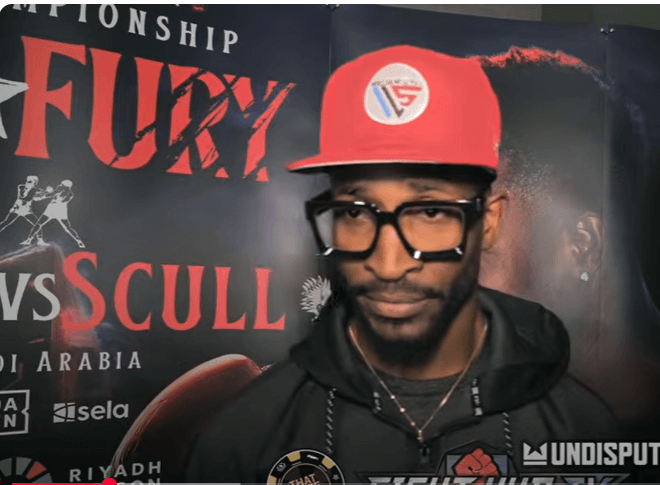
Arne’s Almanac: The Good, the Bad, and the (Mostly) Ugly; a Weekend Boxing Recap and More
It’s old news now, but on back-to-back nights on the first weekend of May, there were three fights that finished in the top six snoozefests ever as measured by punch activity. That’s according to CompuBox which has been around for 40 years.
In Times Square, the boxing match between Devin Haney and Jose Carlos Ramirez had the fifth-fewest number of punches thrown, but the main event, Ryan Garcia vs. Rolly Romero, was even more of a snoozefest, landing in third place on this ignoble list.
Those standings would be revised the next night – knocked down a peg when Canelo Alvarez and William Scull combined to throw a historically low 445 punches in their match in Riyadh, Saudi Arabia, 152 by the victorious Canelo who at least pressed the action, unlike Scull (pictured) whose effort reminded this reporter of “Cat on a Hot Tin Roof” – no, not the movie starring Paul Newman, just the title.
CompuBox numbers, it says here, are best understood as approximations, but no amount of rejiggering can alter the fact that these three fights were stinkers. Making matters worse, these were pay-per-views. If one had bundled the two events, rather than buying each separately, one would have been out $90 bucks.
****
Thankfully, the Sunday card on ESPN from Las Vegas was redemptive. It was just what the sport needed at this moment – entertaining fights to expunge some of the bad odor. In the main go, Naoya Inoue showed why he trails only Shohei Ohtani as the most revered athlete in Japan.
Throughout history, the baby-faced assassin has been a boxing promoter’s dream. It’s no coincidence that down through the ages the most common nickname for a fighter – and by an overwhelming margin — is “Kid.”
And that partly explains Naoya Inoue’s charisma. The guy is 32 years old, but here in America he could pass for 17.
Joey Archer
Joey Archer, who passed away last week at age 87 in Rensselaer, New York, was one of the last links to an era of boxing identified with the nationally televised Friday Night Fights at Madison Square Garden.
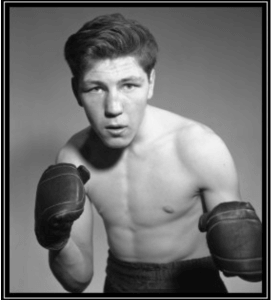
Joey Archer
Archer made his debut as an MSG headliner on Feb. 4, 1961, and had 12 more fights at the iconic mid-Manhattan sock palace over the next six years. The final two were world title fights with defending middleweight champion Emile Griffith.
Archer etched his name in the history books in November of 1965 in Pittsburgh where he won a comfortable 10-round decision over Sugar Ray Robinson, sending the greatest fighter of all time into retirement. (At age 45, Robinson was then far past his peak.)
Born and raised in the Bronx, Joey Archer was a cutie; a clever counter-puncher recognized for his defense and ultimately for his granite chin. His style was embedded in his DNA and reinforced by his mentors.
Early in his career, Archer was domiciled in Houston where he was handled by veteran trainer Bill Gore who was then working with world lightweight champion Joe Brown. Gore would ride into the Hall of Fame on the coattails of his most famous fighter, “Will-o’-the Wisp” Willie Pep. If Joey Archer had any thoughts of becoming a banger, Bill Gore would have disabused him of that notion.
In all honesty, Archer’s style would have been box office poison if he had been black. It helped immensely that he was a native New Yorker of Irish stock, albeit the Irish angle didn’t have as much pull as it had several decades earlier. But that observation may not be fair to Archer who was bypassed twice for world title fights after upsetting Hurricane Carter and Dick Tiger.
When he finally caught up with Emile Griffith, the former hat maker wasn’t quite the fighter he had been a few years earlier but Griffith, a two-time Fighter of the Year by The Ring magazine and the BWAA and a future first ballot Hall of Famer, was still a hard nut to crack.
Archer went 30 rounds with Griffith, losing two relatively tight decisions and then, although not quite 30 years old, called it quits. He finished 45-4 with 8 KOs and was reportedly never knocked down, yet alone stopped, while answering the bell for 365 rounds. In retirement, he ran two popular taverns with his older brother Jimmy Archer, a former boxer who was Joey’s trainer and manager late in Joey’s career.
May he rest in peace.
To comment on this story in the Fight Forum CLICK HERE
Featured Articles
Bombs Away in Las Vegas where Inoue and Espinoza Scored Smashing Triumphs
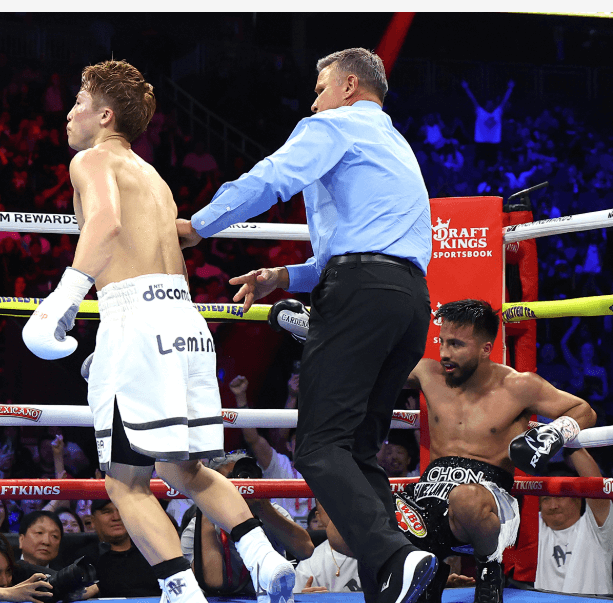
Japan’s Naoya “Monster” Inoue banged it out with Mexico’s Ramon Cardenas, survived an early knockdown and pounded out a stoppage win to retain the undisputed super bantamweight world championship on Sunday.
Japan and Mexico delivered for boxing fans again after American stars failed in back-to-back days.
“By watching tonight’s fight, everyone is well aware that I like to brawl,” Inoue said.
Inoue (30-0, 27 KOs), and Cardenas (26-2, 14 KOs) and his wicked left hook, showed the world and 8,474 fans at T-Mobile Arena in Las Vegas that prizefighting is about punching, not running.
After massive exposure for three days of fights that began in New York City, then moved to Riyadh, Saudi Arabia and then to Nevada, it was the casino capital of the world that delivered what most boxing fans appreciate- pure unadulterated action fights.
Monster Inoue immediately went to work as soon as the opening bell rang with a consistent attack on Cardenas, who very few people knew anything about.
One thing promised by Cardenas’ trainer Joel Diaz was that his fighter “can crack.”
Cardenas proved his trainer’s words truthful when he caught Inoue after a short violent exchange with a short left hook and down went the Japanese champion on his back. The crowd was shocked to its toes.
“I was very surprised,” said Inoue about getting dropped. ““In the first round, I felt I had good distance. It got loose in the second round. From then on, I made sure to not take that punch again.”
Inoue had no trouble getting up, but he did have trouble avoiding some of Cardenas massive blows delivered with evil intentions. Though Inoue did not go down again, a look of total astonishment blanketed his face.
A real fight was happening.
Cardenas, who resembles actor Andy Garcia, was never overly aggressive but kept that left hook of his cocked and ready to launch whenever he saw the moment. There were many moments against the hyper-aggressive Inoue.
Both fighters pack power and both looked to find the right moment. But after Inoue was knocked down by the left hook counter, he discovered a way to eliminate that weapon from Cardenas. Still, the Texas-based fighter had a strong right too.
In the sixth round Inoue opened up with one of his lightning combinations responsible for 10 consecutive knockout wins. Cardenas backed against the ropes and Inoue blasted away with blow after blow. Then suddenly, Cardenas turned Inoue around and had him on the ropes as the Mexican fighter unloaded nasty combinations to the body and head. Fans roared their approval.
“I dreamed about fighting in front of thousands of people in Las Vegas,” said Cardenas. “So, I came to give everything.”
Inoue looked a little surprised and had a slight Mona Lisa grin across his face. In the seventh round, the Japanese four-division world champion seemed ready to attack again full force and launched into the round guns blazing. Cardenas tried to catch Inoue again with counter left hooks but Inoue’s combos rained like deadly hail. Four consecutive rights by Inoue blasted Cardenas almost through the ropes. The referee Tom Taylor ruled it a knockdown. Cardenas beat the count and survived the round.
In the eighth round Inoue looked eager to attack and at the bell launched across the ring and unloaded more blows on Cardenas. A barrage of 14 unanswered blows forced the referee to stop the fight at 45 seconds of round eight for a technical knockout win.
“I knew he was tough,” said Inoue. “Boxing is not that easy.”
Espinoza Wins
WBO featherweight titlist Rafael Espinosa (27-0, 23 KOs) uppercut his way to a knockout win over Edward Vazquez (17-3, 4 KOs) in the seventh round.
“I wanted to fight a game fighter to show what I am capable,” said Espinoza.
Espinosa used the leverage of his six-foot, one-inch height to slice uppercuts under the guard of Vazquez. And when the tall Mexican from Guadalajara targeted the body, it was then that the Texas fighter began to wilt. But he never surrendered.
Though he connected against Espinoza in every round, he was not able to slow down the taller fighter and that allowed the Mexican fighter to unleash a 10-punch barrage including four consecutive uppercuts. The referee stopped the fight at 1:47 of the seventh round.
It was Espinoza’s third title defense.
Photo credit: Mikey Williams / Top Rank
To comment on this story in the Fight Forum CLICK HERE
-
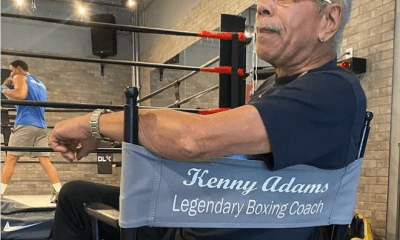
 Featured Articles4 weeks ago
Featured Articles4 weeks agoRemembering Hall of Fame Boxing Trainer Kenny Adams
-
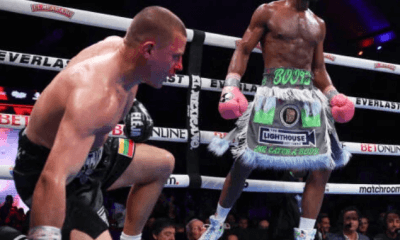
 Featured Articles4 weeks ago
Featured Articles4 weeks agoJaron ‘Boots’ Ennis Wins Welterweight Showdown in Atlantic City
-
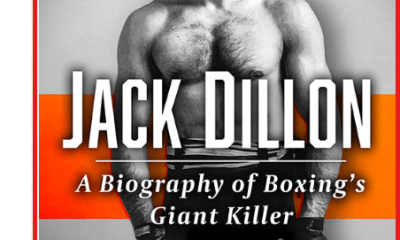
 Featured Articles4 weeks ago
Featured Articles4 weeks agoBoxing Notes and Nuggets from Thomas Hauser
-
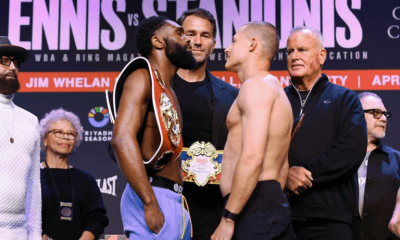
 Featured Articles4 weeks ago
Featured Articles4 weeks agoAvila Perspective Chap 320: Boots Ennis and Stanionis
-
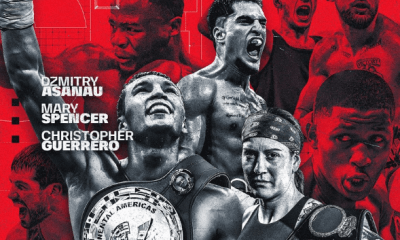
 Featured Articles4 weeks ago
Featured Articles4 weeks agoDzmitry Asanau Flummoxes Francesco Patera on a Ho-Hum Card in Montreal
-
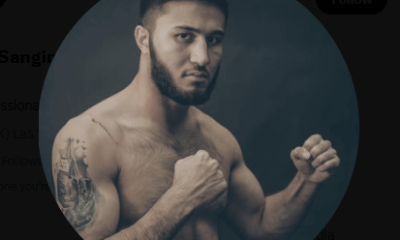
 Featured Articles3 weeks ago
Featured Articles3 weeks agoMekhrubon Sanginov, whose Heroism Nearly Proved Fatal, Returns on Saturday
-
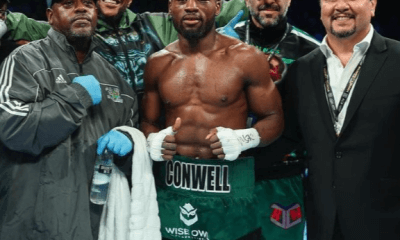
 Featured Articles3 weeks ago
Featured Articles3 weeks agoAvila Perspective, Chap. 322: Super Welterweight Week in SoCal
-
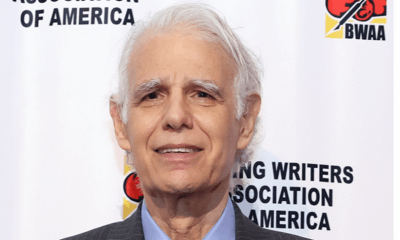
 Featured Articles3 weeks ago
Featured Articles3 weeks agoTSS Salutes Thomas Hauser and his Bernie Award Cohorts















